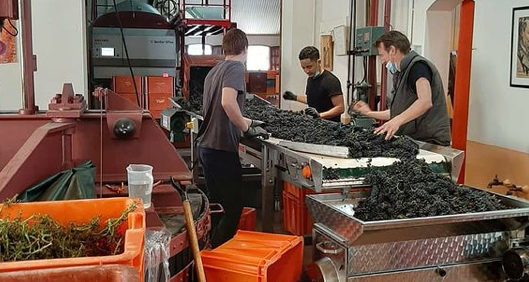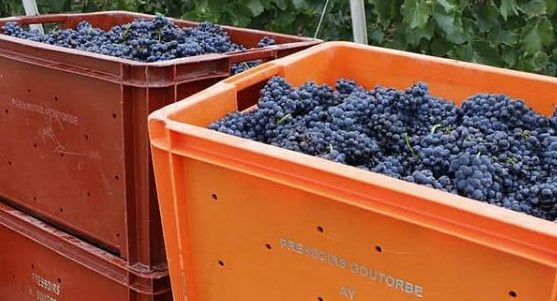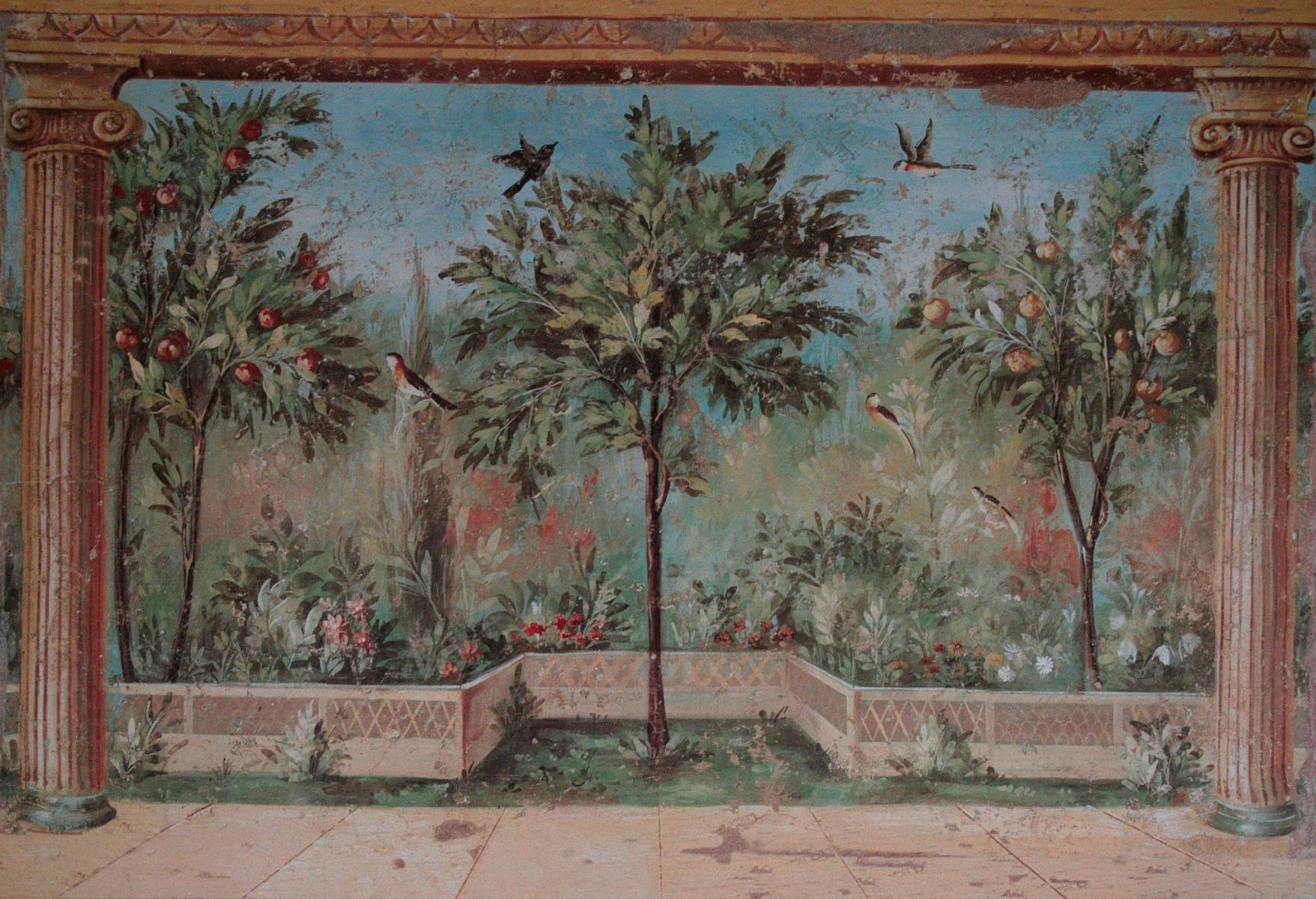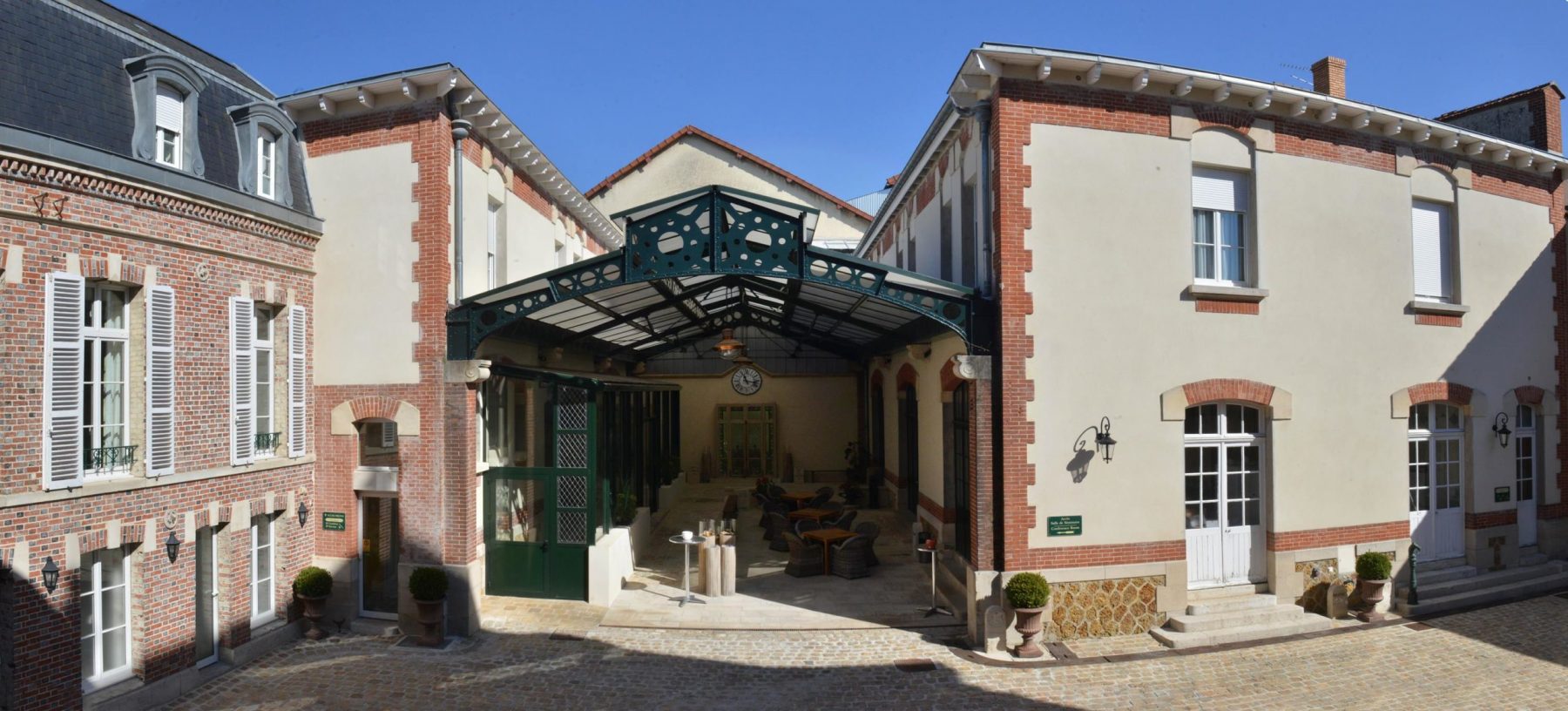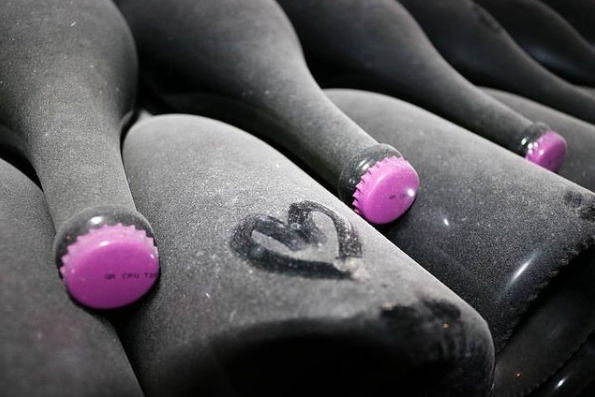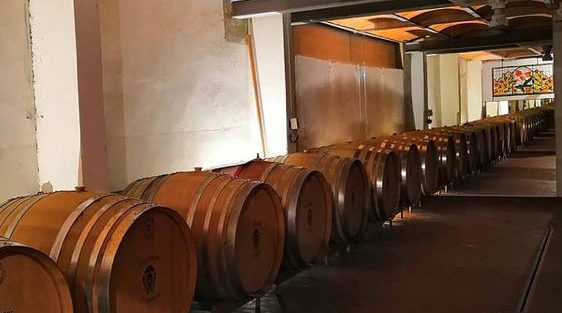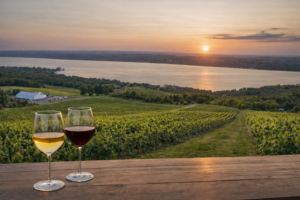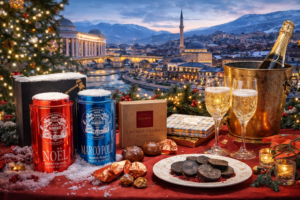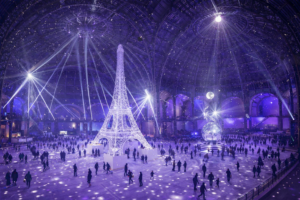The twin cities of Épernay and Aÿ propose you another vision of Champagne in the Marne Valley
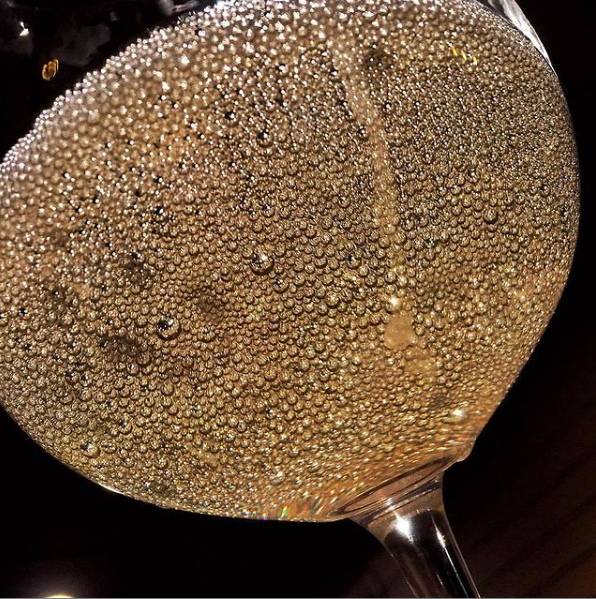
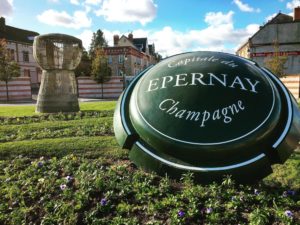 Still on the Marne Valley area, don’t miss the other emblematic city of Champagne. Épernay, located in the Marne department, is proud of its famous Avenue de Champagne, also called “the richest avenue of the World” as it counts the famous Champagne Houses and its priceless storage of Champagne bottles, on the cellars under those incredible mansions.
Still on the Marne Valley area, don’t miss the other emblematic city of Champagne. Épernay, located in the Marne department, is proud of its famous Avenue de Champagne, also called “the richest avenue of the World” as it counts the famous Champagne Houses and its priceless storage of Champagne bottles, on the cellars under those incredible mansions.
Indeed, this rectilinear path of more than one kilometer is lined with buildings with a strong identity architecture style, emblematic of the late nineteenth century. With its private mansions and large trading houses forming a luxurious promenade, punctuated by high massive and worked grids. Ideally located on the royal road, linking Paris to the World, it developed when the wine trade specialized in love. The fame of this street started in the eighteenth century when the great road from Paris to Germany crossed this path, it eventually became “the royal road”.
 Once renamed Faubourg du Commerce, it was even said that all Champagne trading establishments settled there because of the quality of the cellars’ condition, and naturally expanded quickly. On September 2, 1849, the highly frequented Paris-Epernay section of the Eastern rail line was inaugurated and offered new development prospects for the Champagne trade and then in 1925, the boom was so high that the former street trade was re-christened “avenue de Champagne”.
Once renamed Faubourg du Commerce, it was even said that all Champagne trading establishments settled there because of the quality of the cellars’ condition, and naturally expanded quickly. On September 2, 1849, the highly frequented Paris-Epernay section of the Eastern rail line was inaugurated and offered new development prospects for the Champagne trade and then in 1925, the boom was so high that the former street trade was re-christened “avenue de Champagne”.
Then, baptized “Faubourg de la Folie”, under Louis XV (probably because of the presence of rich properties), it became a land of choice for the champagne wine. The largest Champagne Houses are developing there and show their success with many castles, like Perrier, Gérard, Peking, which combine the family aspect and the Champagne trade are thus witnesses of the time. The mansions of Maisons Auban-Moet, Chandon, Maigret, Gallice, Billy and Mercier are all prestigious, as much in the interior layout as in their environment. Nowadays, the whole thing represents a park of 110 kilometers of cellars located under the avenue and more than 200 million bottles. Each year, more than 450,000 people from around the world visit Épernay and its famous avenue.
Otherwise, just at the gate of Épernay and surrounded by vine-covered hills, discover the tranquil village of Aÿ. This pleasant locality hosts the cradle of some of the most famous Champagne houses, such as Veuve-Clicquot, Bollinger and Moët et Chandon, as well as many small producers.
For your information, you’re for sure always welcomed in many of these houses that organize tours of their cellars and eventually vineyards, a few steps away from the city center and its picturesque cobbled streets, all leading to typical brasseries and the Gothic-style Saint-Brice d’Ay church. Let us introduce you here to a selection of welcoming Champagne houses at the crossing of these two locations, while exploring their treasures. By Alex Plato
 At the start of the 20th century, at the time when the Champagne vineyards had to be launched in a sustainable way, Émile Goutorbe became a wine nurseryman. Then, his heirs gradually enlarged his domain after the WW2 and and embarked on the Champagne adventure into the Maison Henri Goutorbe, whose legacy operating nowadays 22 ha and even manage a warm welcome in their three star Castel Jeanson Hotel, also in Aÿ.
At the start of the 20th century, at the time when the Champagne vineyards had to be launched in a sustainable way, Émile Goutorbe became a wine nurseryman. Then, his heirs gradually enlarged his domain after the WW2 and and embarked on the Champagne adventure into the Maison Henri Goutorbe, whose legacy operating nowadays 22 ha and even manage a warm welcome in their three star Castel Jeanson Hotel, also in Aÿ.
For instance, guided by René Goutorbe, an inspired and visionary winemaker, lately joined by Etienne and Bertrand, his two sons, fourth generation, the Champagne Henri Goutorbe located in Aÿ and passionately perpetuating a certain Champagne tradition. Between the selection of the best vines, thanks to the historical activity of vineyard activity spread on their 22 hectare surface, offering them a bunch of Champagnes full of character.
Lately, the Maison Goutorbe even pursued their renovation projects, with the adding of stained glass windows on the reception courtyard, created by the Champagne artist-glassmaker Guillaume Donatini, based some old artworks collected by René Goutorbe for more than 20 years.
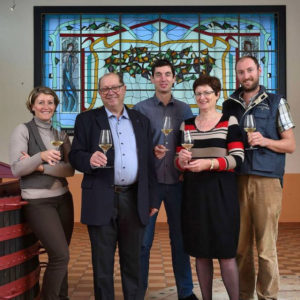 This adornment allows some bucolic wine tastings, in this stained glass space, are always appreciated by visitors (only by reservation). Indeed, these colorful elements (dating back from 1976 to 2004), perfectly match with the spirit of the glassmaker René Lalique, born in Aÿ and as well corresponds to the refined Champagne art-de-vivre.
This adornment allows some bucolic wine tastings, in this stained glass space, are always appreciated by visitors (only by reservation). Indeed, these colorful elements (dating back from 1976 to 2004), perfectly match with the spirit of the glassmaker René Lalique, born in Aÿ and as well corresponds to the refined Champagne art-de-vivre.
Back on the vineyard side, the efforts are monitored by Etienne Goutorbe and the entire house team. Recently satisfied with the promising 2019 harvest, thanks to a generous sunshine and a satisfactory humidity in spring, which lead the wines to reach a perfect aromatic maturity.
On top of that, in some of their Aÿ vines, Quazars, their Boulonnais draft horse, helps them with the mechanical grassing, notably for the Blanc de Noirs plots. Although mechanic tools and tractors are used for the remainder of the vineyard and even the harvested hay from their farmland in Aÿ is used to provide the Quazars‘ food.
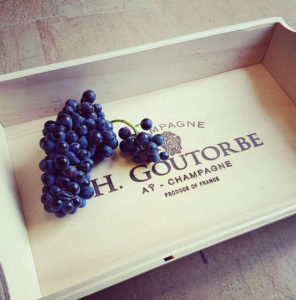 Moreover, many beehives standing in their area, produce some honey served at breakfasts at the Castel Jeanson Hotel. On the cellar side, disgorging and dressing are coordinated by Bertrand Goutorbe and his faithful colleagues, preparing the upcoming vintages. By the way, the two brothers Etienne and Bertrand have the same tasting approach as their father René, mostly starring Pinot Noir and a small part of Chardonnay.
Moreover, many beehives standing in their area, produce some honey served at breakfasts at the Castel Jeanson Hotel. On the cellar side, disgorging and dressing are coordinated by Bertrand Goutorbe and his faithful colleagues, preparing the upcoming vintages. By the way, the two brothers Etienne and Bertrand have the same tasting approach as their father René, mostly starring Pinot Noir and a small part of Chardonnay.
Adding to this, the Maison Goutorbe follows a new challenge within the protection of the environment, through the HVE label (High Environmental Value) and VDC recognition (sustainable viticulture in Champagne). In fact, two processes encouraging the domain to maintain a real biodiversity in terms of flora and fauna and even sharing experiences with various pals from the Vigneron Indépendant and Club Trésors de Champagne groups. Nonetheless, a series of photovoltaic panels have been installed above the roofs of the Champagne Goutorbe headquarters for more than 10 years, allowing them to be energetically autonomous for the winery and powering their electric cars.
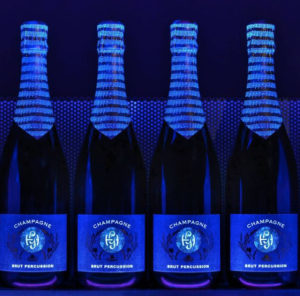 Regarding their Champagnes, the Brut Percussion Premier Cru is a golden and luminous nectar, featuring fine bubbles, able to generate a sensual effervescent tempo, such as musical notes in a glass. This ode to music is conserved in a neat bottle, draped in an ornament revealing a musical score in the beam of black light.
Regarding their Champagnes, the Brut Percussion Premier Cru is a golden and luminous nectar, featuring fine bubbles, able to generate a sensual effervescent tempo, such as musical notes in a glass. This ode to music is conserved in a neat bottle, draped in an ornament revealing a musical score in the beam of black light.
Embellished by the two main grape varieties, with the dominating Pinot Noir bringing its lot of powerful nose of candied and dried fruits, essentially in the expression of an intense and blooming bucket of flavors. Completed by the complexity of Chardonnay, revealing its inner notes of apple, pear, citrus and quince jam, as a symbol of real maturity for this Champagne, cautiously aged on lees, during 2 years. For this Brut Percussion Premier Cru, the winemaker Etienne Goutorbe was inclined to orchestrate with talent, the union of his Premier and Grand Cru territories (from Aÿ, Mareuil-sur-Aÿ and Bisseuil), in order to compose this unique and flashy nectar. Regularly controlled with a autolysis process of the yeasts at the foam creation, just before disgorging, the result of this savorous juice is a supple attack on the palate, displaying its various aromas of stewed fruits, refreshed by a citrus finish, dedicated to be appreciated at the time of a gastronomic dinner.
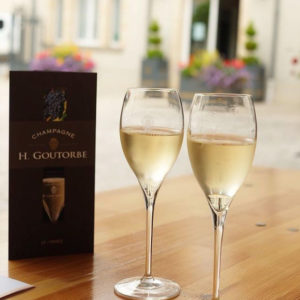
Thereafter, you would for sure find a charming minerality balancing with talent between these visible freshness and aromatic assets, before a tasty salinity as a true final touch for an aperitif time or at the occasion of a lovely diner starring oysters, fine fishes or creamy cheeses!
A new player in the Champagne game, the Comtesse Lafond House
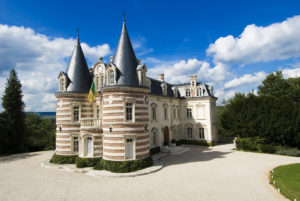
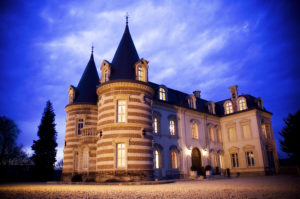
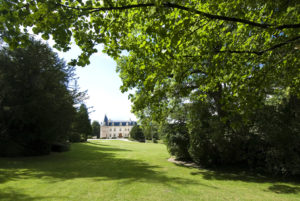
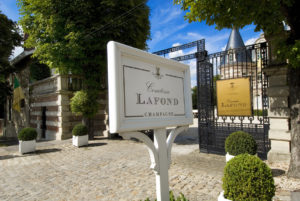
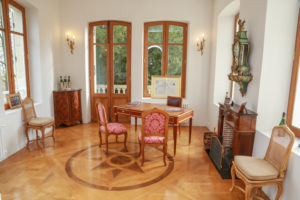
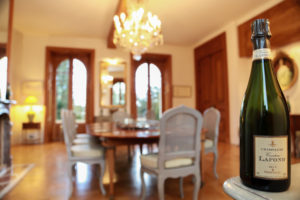
As far as we know, the Comtesse Lafond Champagne House is part of the newcomers in the Champagne Avenue of Épernay, since the site, formerly property of Eugène Mercier under the name of the Château de Pékin, was bought by the Baron de Ladoucette in 1998, also owner of other vineyards across the Hexagon. This monumental site, testifying the flourishing past of the city, was restored at the cost of three years of renovation work, to paint back the original charm, thanks in particular to the Compagnons du Devoir cooperation. The first bottles of the seven cuvées proposed nowadays, came out in the early 2000s. The place also provides salons for specific events after a possible visit of the Château‘s wine cellars and its extensive park, through agreements between prestigious food and Champagne. As one of the last family Champagne houses, notably after buying vineyards located over Pierry in 2000, the management decided that the sales would be mainly at 95% aimed to hotels and restaurants customership (photo credits: Champagne Comtesse Lafond).
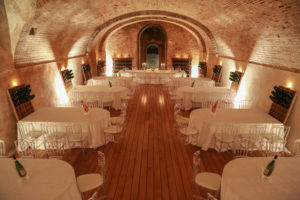

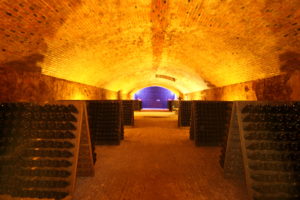
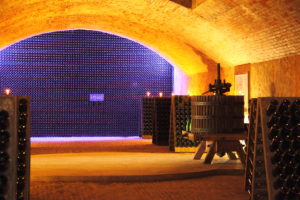
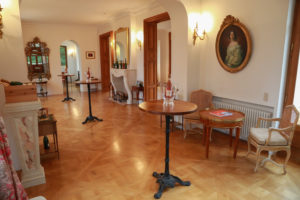
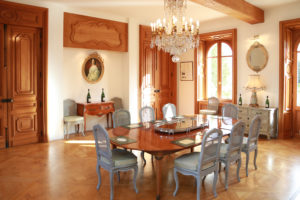
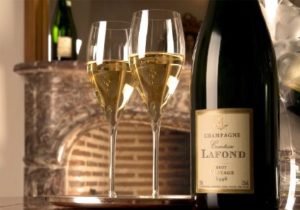
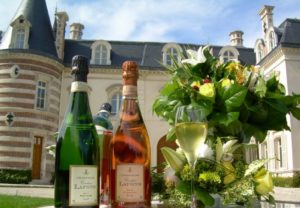
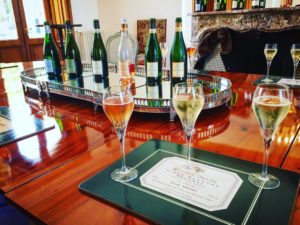 The castle was built in 1860 by Eugène Mercier but was abandoned in 1950, until its acquisition in 2000 and 3 years of renovation work was needed to return to the original charm and oak-wood templets inspired by those that adorn the porch of Trinity College Dublin. The joinery wood comes from Avelin State Forests.
The castle was built in 1860 by Eugène Mercier but was abandoned in 1950, until its acquisition in 2000 and 3 years of renovation work was needed to return to the original charm and oak-wood templets inspired by those that adorn the porch of Trinity College Dublin. The joinery wood comes from Avelin State Forests.
The Comtesse Lafond inspired the name of the brand, as a tribute to the name of great great-grandmother of the founder Baron de la Doucette, in their estate in Pouilly-sur-Loire, portraited by the academical painter Franz-Xaver Winterhalter. In summary, 7 varieties of Champagne are proposed for large restaurants, 50% of which are exported, starting from 3g to 6g of sugar amount, between the extra-brut and the Blanc de Blancs range or the Comtesse vintage with 9g vs 13g a casual Champagne. The House doesn’t use barrels to avoid altering the taste of the Champagne fruit.
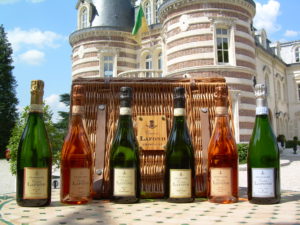

Champagne Comtesse Lafond, 79 Avenue de Champagne, 51200 Épernay (France) / Open every day from 10am until 12am and from 2pm until 6pm / Phone : 00 33 (0)3 26 32 26 40. More information on the official website.
Another way to do Champagne
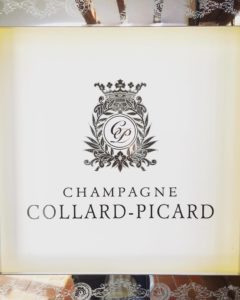 On the same Champagne Avenue, the Collard-Picard House was also recently born from an alliance of two families, in 1996. Since the early days, the idea was to remain traditional while harvesting their Champagne grapes by handling, to be able to control the supply chain and adopting certain own receipts. Their cuvées are aged in oak barrels (of 7,200 liters, equivalent to 20,000 bottles) since 4 generations, allowing a controlled oxygenation of their wine, able to breathe while bringing it more aromas without being too woody. Adding to this, a cautious fermentation is processed, without any malolactic form.
On the same Champagne Avenue, the Collard-Picard House was also recently born from an alliance of two families, in 1996. Since the early days, the idea was to remain traditional while harvesting their Champagne grapes by handling, to be able to control the supply chain and adopting certain own receipts. Their cuvées are aged in oak barrels (of 7,200 liters, equivalent to 20,000 bottles) since 4 generations, allowing a controlled oxygenation of their wine, able to breathe while bringing it more aromas without being too woody. Adding to this, a cautious fermentation is processed, without any malolactic form.
Furthermore, their homemade juice is not chaptalized after harvest, leaving natural yeasts upraising for 2 months. Most of their production is located in Villers-Chatillon, 15km from Epernay, on 16 hectares extended on two vineyards, on the clay soils of the Marne Valley and those limestones of the Côte des Blancs, more suitable to Chardonnay and fulfilling their annual production of 120,000 bottles. In another hand, cuvées are aged at least 3 years, minimizing the acidity of the wine, with a disgorging stage taking place at least 6 months before getting ready, allowing the liquor to better “marry the wine” (photo credits: Hugh Tran).
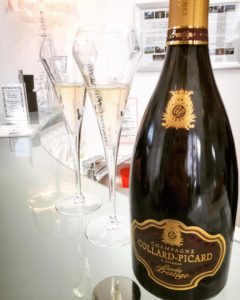

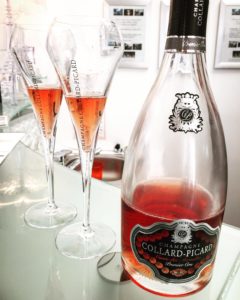
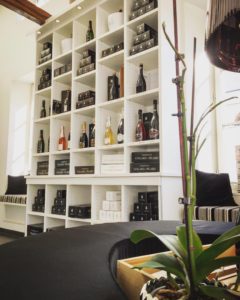 A minority of Champagne makers offer a vintage bleeding, with a fruit marriage of 80% Pinot Noir and 20% Chardonnay, unlike the majority of farmers. Then, for the rosé conception, the way is to watch hour by hour the color of the juice with a maceration of the skin of the grapes.
A minority of Champagne makers offer a vintage bleeding, with a fruit marriage of 80% Pinot Noir and 20% Chardonnay, unlike the majority of farmers. Then, for the rosé conception, the way is to watch hour by hour the color of the juice with a maceration of the skin of the grapes.
Listening to nature, the Maison Collard-Picard gently accompanies its family agriculture methods through as natural as possible processes, within the use of traditional plow plow, no chemical weed killer and turf, in order to prevent grass proliferation but even though, Mrs Collard thinks that “organic, from an economic point of view is not viable”, since an average area is 2 hectares per farm. On top of that, each winter, the longtime experience of the House is mobilized to succeed the strategic act of assemblage, completing the ancestral method (aging of wines in oak barrels and cork stoppering from bottling) with a necessary touch of modernity (thermoregulation of the vats and air conditioning in the cellars). Adding to this, an Art gallery completes the showroom on the illustrious Avenue de Champagne.
Champagne Collard-Picard, 15 Avenue de Champagne, 51200 Épernay (France) / Phone: 00 33 (0)3 26 52 36 93. More information on their official website.


